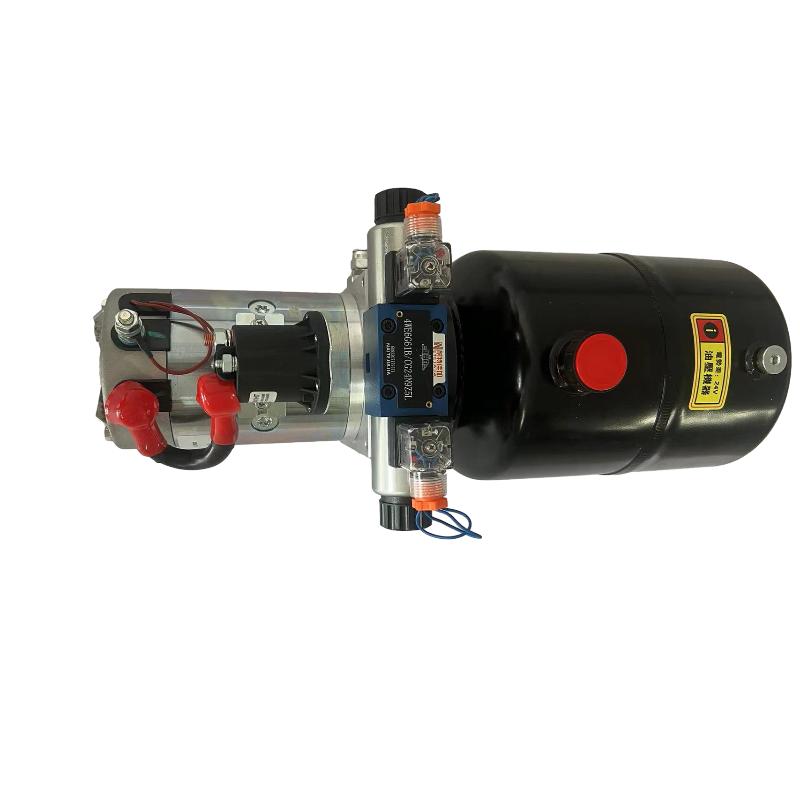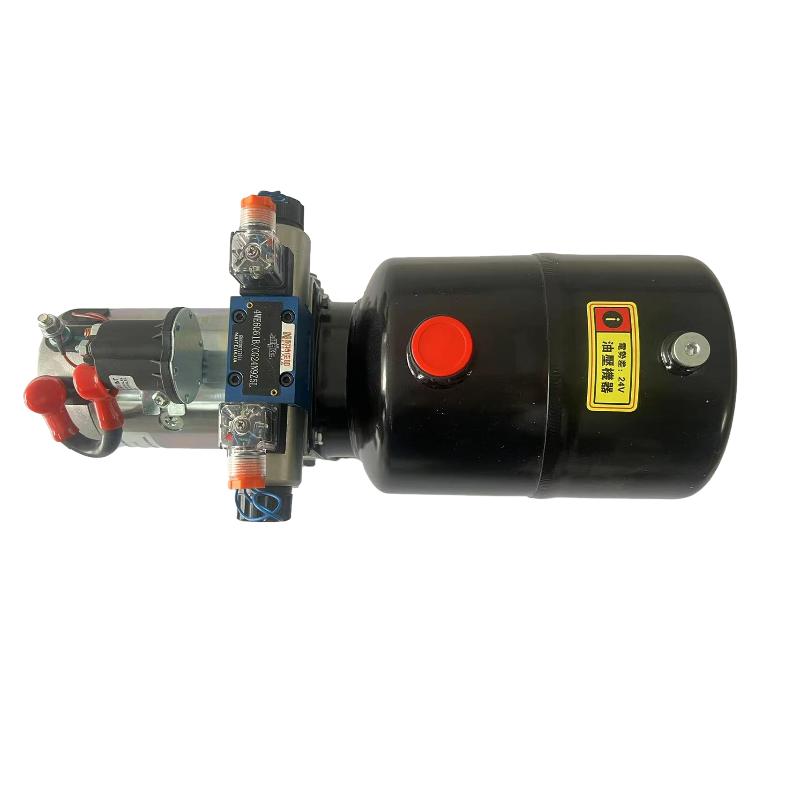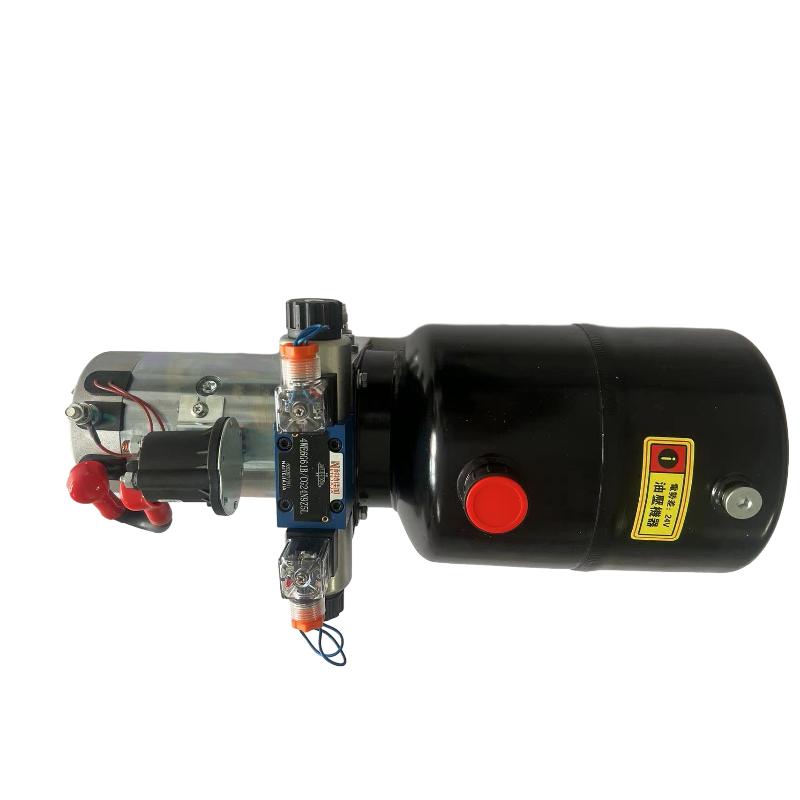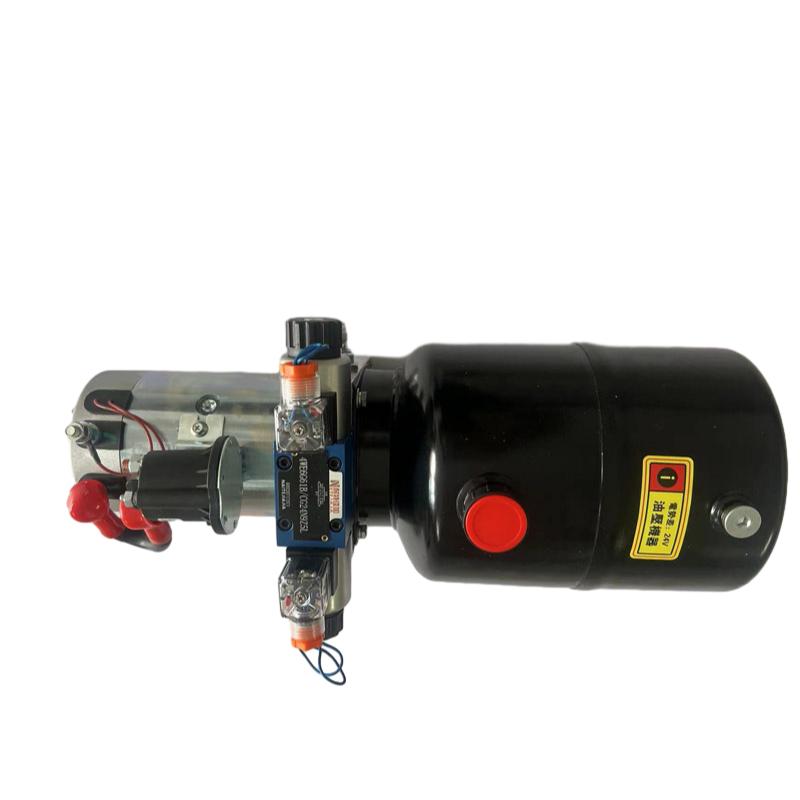ສ.ຫ. . 17, 2025 01:40 Back to list
Efficient Double Acting Power Unit | Versatile Hydraulic Systems
Understanding Double Acting Power Units: A Strategic Overview
In today's dynamic industrial landscape, precision and efficiency are paramount, driving the demand for advanced hydraulic solutions. Among these, the double acting power unit stands out as a cornerstone technology, essential for a myriad of applications requiring controlled bidirectional force. These units are integral to systems where loads need to be both pushed and pulled, or lifted and lowered, with exacting precision, unlike their single-acting counterparts which only provide force in one direction, relying on external forces like gravity or springs for retraction. The global hydraulic equipment market is projected to grow significantly, fueled by expansion in sectors such as construction, manufacturing, and material handling, directly increasing the reliance on robust and reliable double acting power units. This growth underscores a broader trend towards automation and efficiency, where the ability to manage complex mechanical movements with hydraulic power becomes a key competitive differentiator. Our focus here is to delve into the intricate aspects of these units, from their fundamental operational principles to their sophisticated manufacturing processes, ensuring a comprehensive understanding for B2B decision-makers seeking optimal solutions.
The market for hydraulic power units, specifically those with double acting capabilities, is experiencing sustained growth driven by technological advancements and the increasing demand for high-performance, energy-efficient systems across various industries. Current trends indicate a strong push towards miniaturization without compromising power, integration of smart control systems for enhanced automation, and the adoption of more eco-friendly hydraulic fluids. Furthermore, there is a rising emphasis on custom engineering solutions that can precisely meet the unique operational demands of specialized machinery, moving beyond off-the-shelf components. The reliability and longevity of these units, alongside their capacity to operate under extreme conditions, make them indispensable in critical applications. This detailed exploration aims to provide valuable insights into the technical parameters, application versatility, and strategic advantages that define state-of-the-art double acting power unit solutions, enabling informed procurement decisions for industrial and manufacturing enterprises globally.
Technical Specifications and Performance Metrics
Understanding the core technical specifications is crucial when selecting a double acting power unit for industrial applications. These units typically consist of a motor, hydraulic pump, reservoir, and a control valve system designed to direct fluid flow to a double-acting cylinder. Key parameters that define their performance include operating pressure, which can range from standard 2000 PSI (140 bar) up to high-pressure 4500 PSI (310 bar) for heavy-duty applications, ensuring sufficient force generation for diverse tasks. Flow rates, measured in gallons per minute (GPM) or liters per minute (LPM), directly impact the speed of the hydraulic cylinder's movement, with typical values ranging from 0.5 GPM to 10 GPM depending on the motor size and pump displacement. Reservoir capacity, specified in liters or gallons, determines the total volume of hydraulic fluid available, crucial for heat dissipation and system longevity, often ranging from 5 liters for compact units to over 100 liters for larger systems.
Motor power, expressed in kilowatts (kW) or horsepower (HP), is another critical specification, influencing the unit's overall capability and energy consumption; common options include 0.75 kW to 30 kW motors for various industrial needs. The type of motor, whether AC (Alternating Current) or DC (Direct Current), also plays a role, with DC units often favored for mobile applications due to battery compatibility, while AC units are predominant in stationary industrial settings. Operating temperature range, typically from -20°C to 70°C, ensures reliability in diverse environmental conditions. Noise levels, measured in decibels (dB), are becoming increasingly important for occupational safety and compliance, with modern double acting power unit designs aiming for quieter operation, often below 75 dB. These comprehensive specifications collectively ensure that the selected power unit can precisely meet the operational demands, efficiency targets, and environmental constraints of any sophisticated industrial application, guaranteeing optimal performance and system longevity for demanding B2B operations.

Typical Double Acting Power Unit Specifications
Precision Manufacturing and Quality Assurance
The robust performance and extended service life of a double acting power unit are directly attributable to its meticulously engineered manufacturing process and stringent quality control. The journey begins with the selection of premium-grade materials, such as high-strength steel alloys for reservoirs and pump housings, ensuring durability and resistance to operational stresses. Components like gears, shafts, and cylinders are often crafted from hardened steel or specialized ductile iron, chosen for their superior wear resistance and fatigue strength under continuous hydraulic pressure. Precision manufacturing techniques are paramount, starting with advanced casting or forging processes for initial component formation, followed by state-of-the-art CNC (Computer Numerical Control) machining. CNC ensures unparalleled dimensional accuracy and surface finishes for critical parts like valve blocks and pump components, which directly translates to optimized performance and minimized internal leakage within the hydraulic circuit.
Beyond material selection and machining, the assembly process for a double acting power unit involves highly skilled technicians and specialized equipment. Each unit undergoes rigorous testing at various stages of production. This includes hydrostatic testing to verify the integrity of the reservoir and piping under extreme pressures, ensuring no leaks or structural weaknesses. Performance testing validates key operational parameters such as flow rate, pressure output, and motor efficiency against design specifications. Adherence to international standards like ISO 9001 for quality management and ANSI (American National Standards Institute) for specific hydraulic component performance is not merely a compliance check but a foundational commitment to delivering reliable, long-lasting products. This comprehensive approach, from raw material inspection to final product validation, ensures an exceptional service life typically ranging from 10 to 20 years with proper maintenance, significantly contributing to a lower total cost of ownership for industrial clients.

Versatile Applications and Strategic Advantages
The versatility of the double acting power unit makes it an indispensable component across a vast spectrum of industrial sectors, empowering machinery that demands precise, controlled bidirectional movement. In the petrochemical industry, these units are vital for operating large gate valves, emergency shutdown systems, and precise fluid transfer mechanisms, where their inherent robust design and ability to handle high pressures ensure safety and continuous operation in hazardous environments. For the metallurgy sector, they power heavy-duty presses, furnace door operations, and material handling systems, providing the immense force and accurate control required for shaping and processing metals. In water and wastewater treatment, double acting power units control sluice gates, filter presses, and pumping stations, contributing to efficient resource management and environmental compliance through reliable and precise actuation.
Beyond these core industries, double acting power units find extensive use in mobile applications such as scissor lifts, dump trucks, and snowplows, enabling dynamic control over their working mechanisms. Their technical advantages are numerous: they offer superior energy efficiency by optimizing hydraulic fluid flow and minimizing waste, translating into significant operational cost savings over the long term. Their robust construction and use of corrosion-resistant materials, such as stainless steel components or specialized coatings, provide exceptional durability and anti-corrosion properties, crucial for operations in harsh or chemically aggressive environments like marine or offshore drilling. The precise control offered by these units, facilitated by advanced valve systems and feedback loops, ensures unparalleled accuracy in positioning and force application, leading to higher quality outputs and reduced rework. Furthermore, their inherent safety features, including pressure relief valves and robust overload protection, enhance operational security, making them a reliable choice for critical industrial processes.

Custom Solutions and Manufacturer Trust
While standard models of double acting power units meet many industrial needs, specialized applications often demand custom-engineered solutions. Leading manufacturers understand this necessity, offering bespoke designs that integrate unique control logic, specific pressure and flow requirements, or specialized materials for extreme environments. This customization extends to reservoir size, motor type (e.g., explosion-proof for hazardous areas), valve configurations (e.g., proportional valves for precise speed control), and the inclusion of advanced sensors for real-time monitoring and predictive maintenance. When evaluating manufacturers, it's crucial to consider their engineering capabilities, their history of successful custom projects, and their adherence to stringent quality and environmental standards. A reputable manufacturer will demonstrate not only technical prowess but also a robust service infrastructure, including responsive customer support and readily available spare parts, ensuring minimal downtime for critical operations.
Selecting the right manufacturer for a double acting power unit is a strategic decision that impacts long-term operational efficiency and reliability. While direct manufacturer comparison tables may vary, key differentiators include a proven track record of industry experience (e.g., 20+ years in hydraulic solutions), adherence to global certifications like ISO 14001 for environmental management, and comprehensive product testing protocols (e.g., 100% factory testing of all units). Furthermore, the availability of comprehensive after-sales support, including installation assistance, training, and a clearly defined warranty (typically 1-2 years), signifies a manufacturer's commitment to customer satisfaction and product longevity. Trusted manufacturers often showcase diverse application case studies, detailing how their customized double acting power units have solved complex challenges for clients in various sectors, illustrating their practical experience and authoritative standing in the industry. For example, a recent project involved designing a compact, high-pressure unit for an offshore oil rig's blow-out preventer system, where space was limited and reliability was paramount, showcasing adaptability and engineering excellence.

Frequently Asked Questions (FAQ)
-
Q: What is the primary advantage of a double acting power unit over a single acting unit?
A: The primary advantage is its ability to exert force in two directions (push and pull) on a hydraulic cylinder, providing full control over both extension and retraction movements. Single acting units only provide force in one direction, relying on external forces for the return stroke. This bidirectional control makes the double acting power unit suitable for applications requiring precise positioning or lifting/lowering of heavy loads, such as in industrial presses, forklifts, and complex automation systems.
-
Q: How does a double acting power unit ensure energy efficiency?
A: Modern double acting power units incorporate features like efficient pump designs (e.g., gear pumps or piston pumps with high volumetric efficiency), energy-saving motors, and intelligent control systems. Proportional valves and variable speed drives can precisely match power output to demand, reducing energy consumption during idle or low-load periods. Furthermore, proper system design minimizes pressure drops and leakage, contributing to overall hydraulic efficiency and reduced power waste.
-
Q: What is the typical lifespan of a double acting power unit and how can it be extended?
A: A well-maintained double acting power unit can have a service life of 10 to 20 years or more. To extend its lifespan, critical practices include regular oil changes with the correct hydraulic fluid, routine filter replacement to prevent contamination, maintaining optimal operating temperatures, and conducting periodic inspections for leaks, wear, and proper functionality of components like pumps and valves. Adhering to the manufacturer's recommended maintenance schedule is paramount for ensuring long-term reliability and performance.
Delivery and Warranty Commitments
We understand the critical nature of timely delivery for industrial projects. Our standard delivery timeframe for a double acting power unit typically ranges from 4-6 weeks for custom configurations and 2-3 weeks for standard models, depending on current production schedules and material availability. Expedited options are often available upon request to meet urgent project deadlines. Each power unit is backed by a comprehensive 1-year warranty, covering manufacturing defects and ensuring peace of mind regarding product quality and performance. Our commitment extends beyond the warranty period with readily available technical support and spare parts, ensuring the long-term operational integrity of your investment. Client satisfaction is our priority, and our dedicated support team is always available to assist with any technical queries or operational challenges, reflecting our commitment to trustworthiness and long-term partnership.
Authoritative References
- Merritt, H. E. (1967). Hydraulic Control Systems. John Wiley & Sons.
- Mohsen, M. F. N. (2007). Hydraulics and Pneumatics: A Technician's and Engineer's Guide. Butterworth-Heinemann.
- Parr, E. A. (1999). Hydraulics and Pneumatics: A Technician's and Engineer's Guide to the Industrial Applications of Fluid Power. Butterworth-Heinemann.
-
1.5 Ton Lifting Cylinder 70/82-40-290-535-Hebei Shenghan|Precision Hydraulic Solutions&Industrial Lifting
NewsAug.17,2025
-
1.5 Ton Lifting Cylinder 70/82-40-290-535 - Hebei Shenghan Hydraulic Machinery Co., Ltd.|Precision Engineering,Customization Options
NewsAug.17,2025
-
Efficient Double Acting Power Unit | Versatile Hydraulic Systems
NewsAug.17,2025
-
1.5 Ton Lifting Cylinder-Hebei Shenghan Hydraulic|Heavy-Duty Lifting,Custom Hydraulic Solutions
NewsAug.17,2025
-
1.5 Ton Lifting Cylinder 70/82-40-290-535 - Hebei Shenghan Hydraulic Machinery Co. Ltd.
NewsAug.16,2025
-
1.5 Ton Lifting Cylinder 70/82-40-290-535 - Hebei Shenghan | Industrial Lifting, Custom Hydraulic Systems
NewsAug.16,2025
